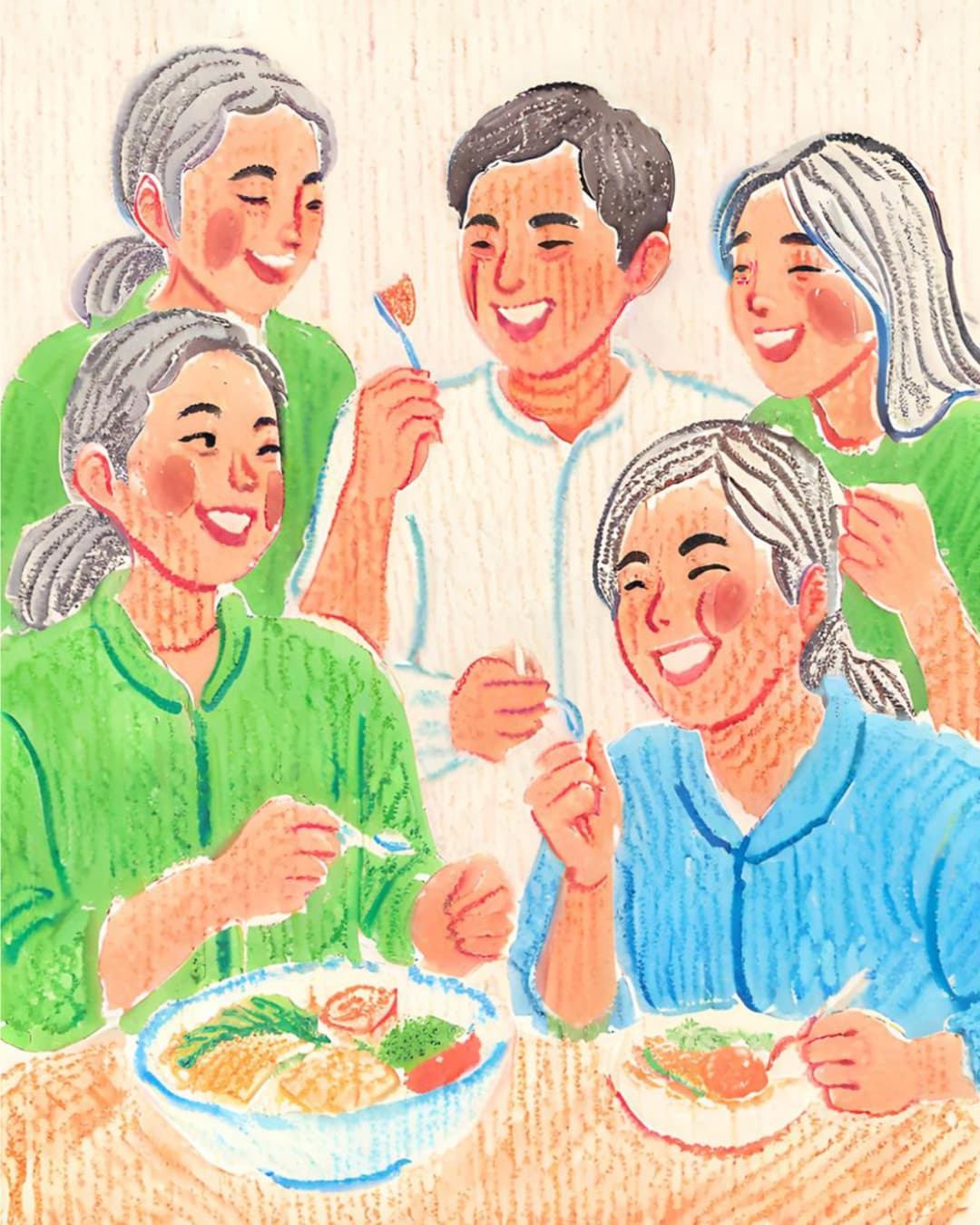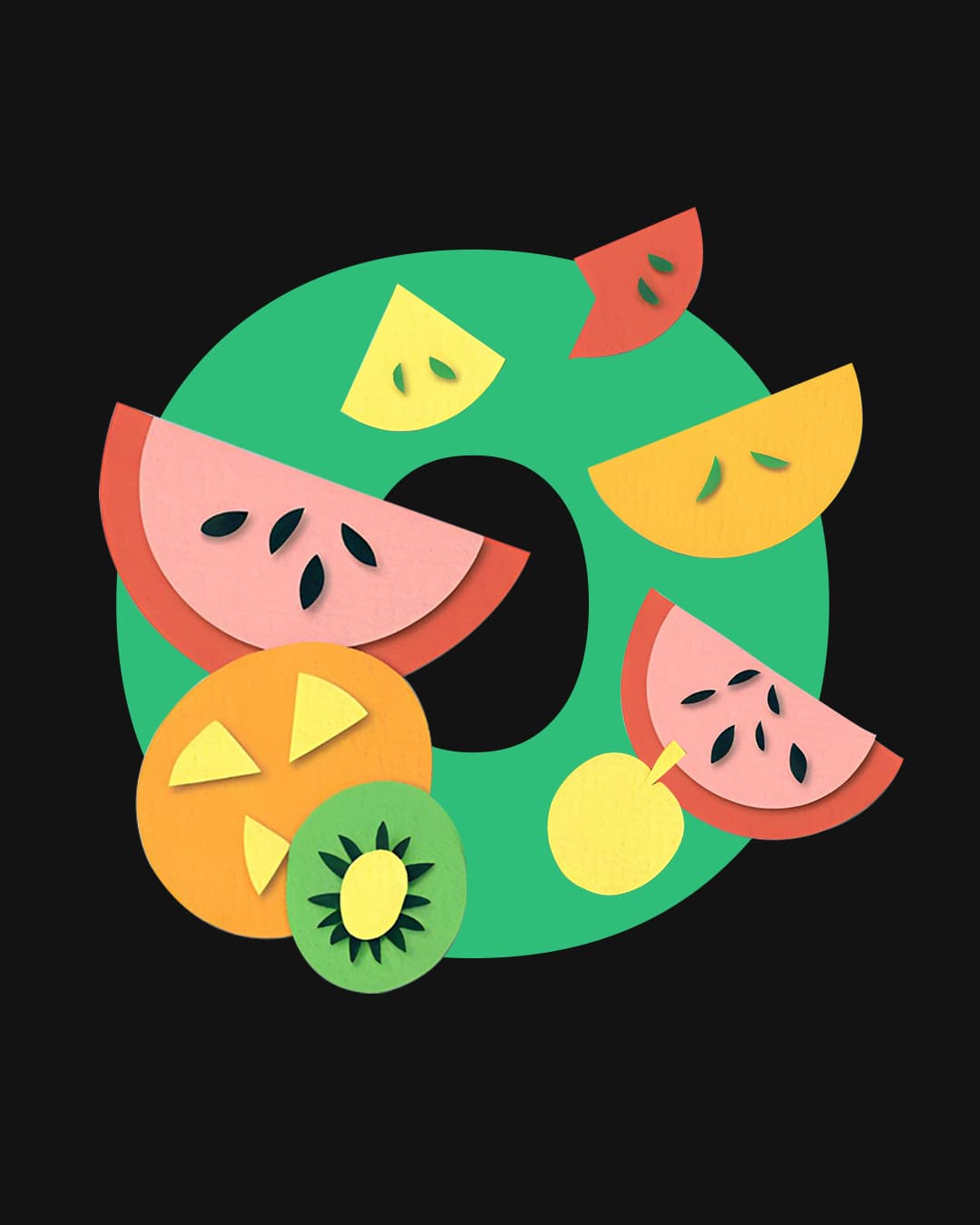FOOD
Dark Cuisine Might Shed Light on Modern Culinary
Southeast Asia

The food and beverage game has been crazy nowadays. Combining coffee and vegetables is never on your mind until you see that viral scallion coffee on your Instagram and TikTok. That’s adding to the long list of peculiar coffee combinations after the octopus latte, salmon americano, century egg coffee, and green pepper coffee in China. Or, perhaps you've seen the tteokbokki milk tea in South Korea. Although the rice cake and boba might have a similar texture, how about the taste between gochujang and milk? Then, we have Singapore with the limited-edition vegetable cake with beansprouts, peas, carrots, mushrooms, or asparagus as the topping. Last but not least, let’s not forget Malaysia with the sundae berapi and waffle berapi using ghost pepper sauce. What’s actually going on?
Dark Cuisine’s Invasion in Various Countries
In China, there's a specific term to cover these types of dishes and drinks. Netizens call them ‘Dark Cuisine’ or ‘hei an liao li’ to describe these out-of-mind food and beverage combinations that test one’s sensibility. These kinds of cuisine sparks heated debate among the netizens. Some people think they are gross and have to be avoided at all costs, while some people unexpectedly find it good enough and worth a try.
Although the term is coined in China, it's arguably relevant to use the term globally, as people across the countries have done the same. An Indonesian-based coffee shop replicates the viral scallion coffee. (On a side note, let's send huge respect to the R&D team for getting through the process to make it edible enough). Moreover, a Vietnam-based coffee and tea stall took it further by creating green onion milk tea and red chili milk tea. People gave it a try and had a mixed reaction. Some turned out well, but some turned out exactly the opposite.
People's reaction when trying out these weird food combinations
While most people choose to skip these unusual dishes, some people are built differently by creating weird combinations on their own. Calvin Lee (@foodmakescalhappy), a Singapore Foodie, dedicates his Instagram and TikTok account to any kind of out-of-the-world food combinations, opening endless possibilities. Indonesia-based content creator, Adrian Pangestu (@adrianphangphang) went viral by combining ayam geprek and chocolate-flavored Energen, a well-known instant cereal brand. He had tried several other unusual combinations before, including es buah toge buncis (iced fruit cocktail dessert with stir-fried bean sprouts and green beans) and ketoprak cimory (tofu, vegetables, lontong, rice vermicelli served with peanut sauce and Cimory, an Indonesian ready-to-drink yogurt brand).
Food Combination, Explained Scientifically
Despite that, several scientific approaches were done to examine this matter. The results are revolutionary and can be a game-changer to the food industry as a whole. In 2011, Dr. Sebastian Ahnert, a Cambridge physicist with a biochemical network specialty, wrote a scientific article "Flavor network and the principles of food pairing" to understand better about unusual flavor pairings. He compiled more than 50,000 online recipes and mapped the flavor perception and how the ingredients interact with each other.
"It has led to something called computational gastronomy. We can use datasets about food compounds to change the way we experience food," Ahnert explained. Every food item has chemical compounds that are commonly found in other foods. Based on this matter of fact, here are some unpredictable combinations you have never thought of before: coffee and garlic, beef and chocolate, matcha tea and sour cherries, pork and vanilla, and chocolate and caviar have the potential to be a great pair. However, temperature plays a huge role with these chemical compounds, so the execution and food preparation may enhance or ruin the combination instead.
Dr. Ahnert's flavor map
“Cooking can also alter compounds, so we need to do some work predicting how that can change a flavor profile,” Ahnert said. He shared a personal experience regarding this. “Coffee and potato share a lot of compounds, so I made mashed potato with milky coffee. It was horrible. But I’ve had a dish in Paris with coffee and potatoes that worked. So, the execution is a big part [of it], and that is where chefs can really help.”
Years later, Sony AI teamed up with Korea University to create FlavorGraph, an ingredient mapping tool to predict the relationship between the ingredients. The tool uses over a thousand data of flavor molecules based on a million recipes. On Sony AI's website, Sony AI strategy and partnership manager Fred Gifford and Korea University post-doctoral researcher Donghyeon Park said. "As well as relationships between food ingredients and flavor compounds that have not been explored before, the FlavorGraph research will allow greater flexibility for matching single or multiple ingredients to many others," he continued.
FlavorGraph by SonyAI and Korea University (KU)
Experiencing Food is Not Just A Matter of Cooking and Ingredients
While it still makes sense that temperature matters to the food combination, have you ever thought that eating appliances, environment, and even background noise affect our perception of food?
In the book Gastrophysics, Professor Charles Spence argues that eating itself offers much more multi-sensory experience than we commonly expected. The book showcases how food is affected by our senses, behaviors, and external factors, offering a new scientific approach to eating. For example, for most people, meals taste better with heavy and expensive cutlery, or without any cutlery. Research cited by Spence said that eating with our hands enhances how it tastes in the mouth. (p.s. Therefore it makes sense that eating with our bare hands, although not really hygienic, brings its own experience). Tableware also matters: foods served in bowls may taste better, while red plates can make them taste worse.
On the British Psychological Society website, Charles Spence cited studies showing that ambiance lighting and its brightness can affect people’s perception of food and beverage. The first study showed that the audiences preferred the wine more under blue and red lighting, over the green or white ones. Furthermore, they paid much more for the wine, than those with green or white lighting. The next one, the brightness, was tested for people who consumed coffee. Audiences who preferred strong coffee drank more under bright lighting. The exact opposite happened for those who preferred weaker ones.
On the same scientific website, he stated that environmental sounds can influence or bias people's perception of food. Along with Heston Blumenthal, a chef well-known for his experimental and scientific approach to cooking, he conducted a study about people's perception of bacon-and-egg ice cream. It tasted much more bacony while listening to the sound of sizzling bacon rather than clucking chicken sounds. The next study showed that eating oysters was more pleasant while listening to sounds related to the sea than farmyard-related sounds. It led to the creation of the "Sound of The Sea'' dish at The Fat Duck owned by Heston. Audiences are served with a plate of food that resembles a beach, such as foam, seaweed, and sand. Before they start eating, they are recommended to use a mini iPod put inside a seashell with a "Sound of The Sea '' soundtrack.
Sound of the Sea dish
The room for exploration and experimentation is still wide open for everyone who works in the food industry. Imagine there will be a time when vegetables are a common ingredient for milk and coffee. Can scallion coffee at last be accepted by everyone and enhanced by altering the serving method and using certain types of cups? Next, will there be a time when chips and syrup medicines become a norm instead of using regular sauce? Only time will know, but perhaps any of you are inspired to make it happen and change the food and beverages game in the industry.
Related Stories

CULTURAL INSIGHT: RELATIONSHIP
April 01, 2024
The Battle to Pay the Bill—An Asian Dining Ritual
Southeast Asia
Settling the bill at mealtime often turns into a significant contest among Asian friends and family ...

RELATIONSHIP, FOOD
May 16, 2024
Slicing Fruit: A Gesture of Love and Prayer
Southeast Asia
Imagine that you are a student, and this is the time when you face your final exam week. You know th...

CULTURAL INSIGHT: FOOD, BUSINESS
June 09, 2023
Sipping Tradition: Bringing Tuban’s Carbonated Legen Drink for All to Enjoy
Tuban, Indonesia
In the small town of Tuban, nestled in the heart of East Java, lies a hidden gem. It is known as one...